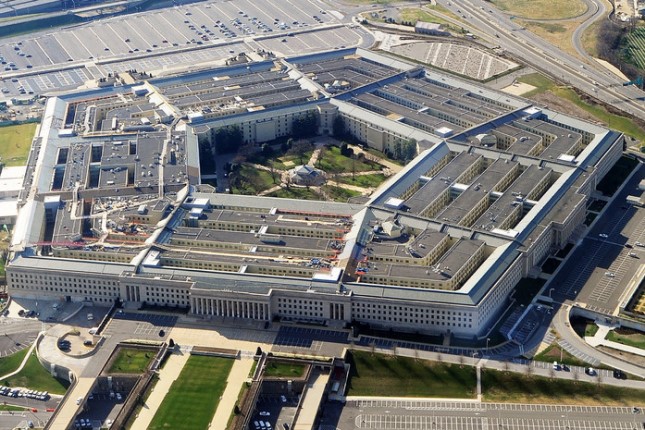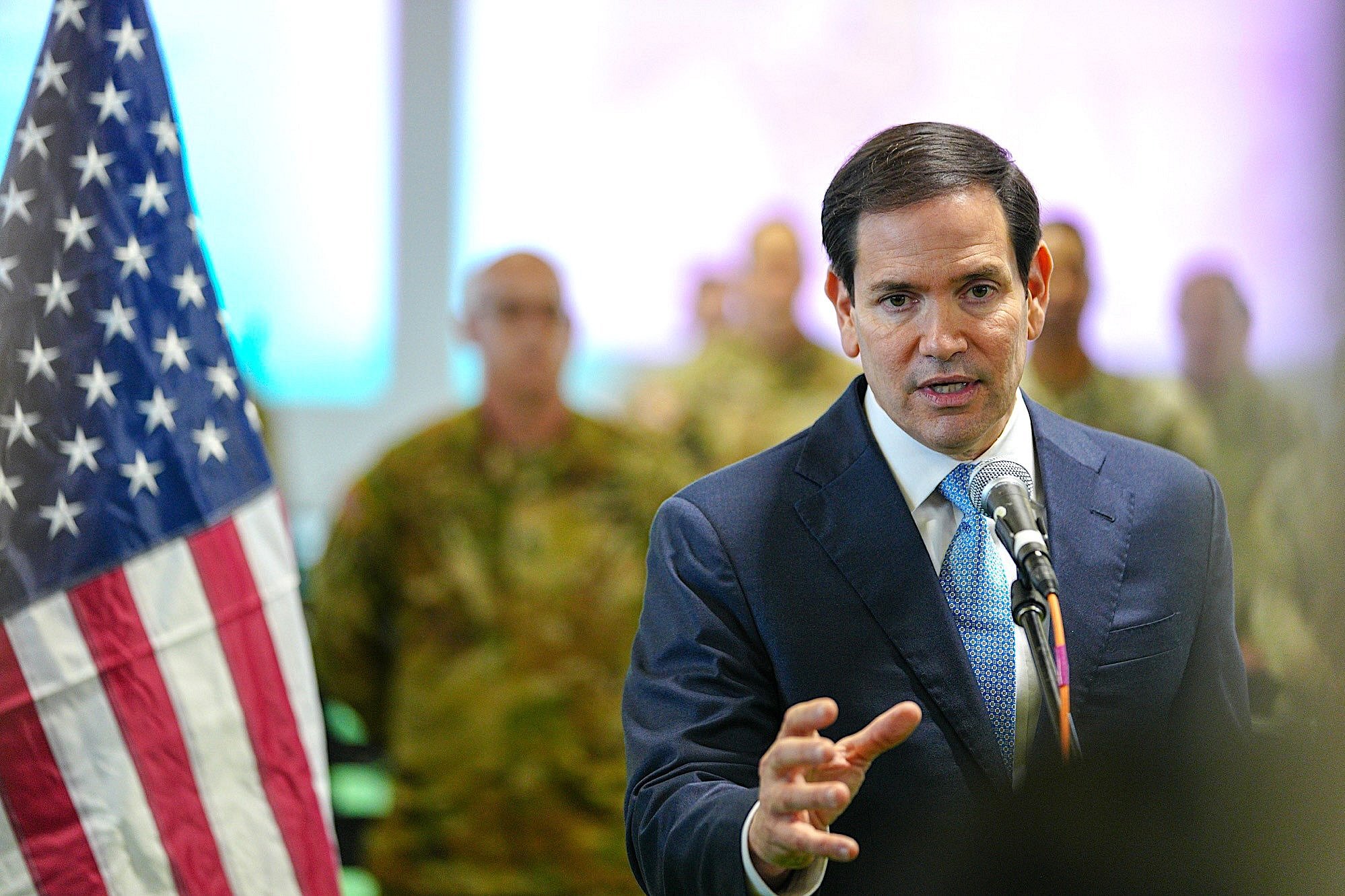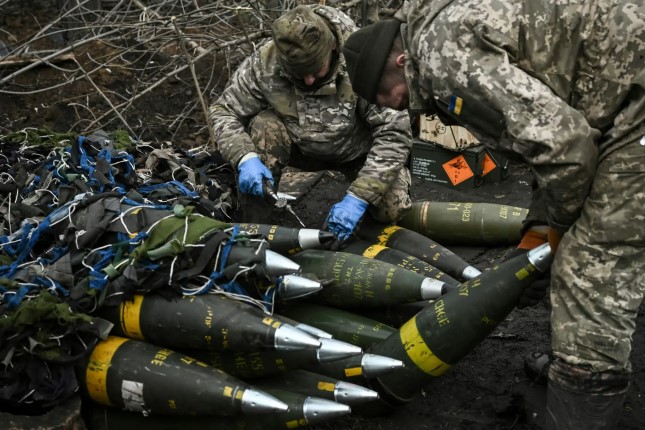2023 was a year marked by devastating conflicts from Russia’s ongoing invasion of Ukraine to Hamas’s horrific terror attacks on Israel, from that country’s indiscriminate mass slaughter in Gaza to a devastating civil war in Sudan. And there’s a distinct risk of even worse to come this year. Still, there was one clear winner in this avalanche of violence, suffering, and war: the U.S. military-industrial complex.
In December, President Joe Biden signed a record authorization of $886 billion in “national defense” spending for 2024, including funds for the Pentagon proper and work on nuclear weapons at the Department of Energy. Add to that tens of billions of dollars more in likely emergency military aid for Ukraine and Israel, and such spending could well top $900 billion for the first time this year.
Meanwhile, the administration’s $100-billion-plus emergency military aid package that failed to pass Congress last month is likely to slip by in some form this year, while the House and Senate are almost guaranteed to add tens of billions more for “national defense” projects in specific states and districts, as happened in two of the last three years.
Annual spending on the costly, dysfunctional F-35 combat aircraft alone is greater than the entire budget of the Centers for Disease Control and Prevention.
Of course, before the money actually starts flowing, Congress needs to pass an appropriations bill for Fiscal Year 2024, clearing the way for that money to be spent. As of this writing, the House and Senate had indeed agreed to a tentative deal to sign onto the $886 billion that was authorized in December. A trillion-dollar version of such funding could be just around the corner. (If past practice is any guide, more than half of that sum could go directly to corporations, large and small.)
A trillion dollars is a hard figure to process. In the 1960s, when the federal budget was a fraction of what it is now, Republican Senator Everett Dirksen allegedly said, “A billion here, a billion there, and pretty soon you’re talking real money.” Whether he did or not, that quote neatly captures how congressional attitudes toward federal spending have changed. After all, today, a billion dollars is less than a rounding error at the Pentagon. The department’s budget is now hundreds of billions of dollars more than at the height of the Vietnam War and over twice what it was when President Dwight Eisenhower warned of the “unwarranted influence” wielded by what he called “the military-industrial complex.”
To offer just a few comparisons: Annual spending on the costly, dysfunctional F-35 combat aircraft alone is greater than the entire budget of the Centers for Disease Control and Prevention. In 2020, Lockheed Martin’s contracts with the Pentagon were worth more than the budgets of the State Department and the Agency for International Development combined, and its arms-related revenues continue to rival the government’s entire investment in diplomacy. One $13 billion aircraft carrier costs more than the annual budget of the Environmental Protection Agency. Overall, more than half of the discretionary budget Congress approves every year—basically everything the federal government spends other than on mandatory programs like Medicare and Social Security—goes to the Pentagon.
It would, I suppose, be one thing if such huge expenditures were truly needed to protect the country or make the world a safer place. However, they have more to do with pork-barrel politics and a misguided “cover the globe” military strategy than a careful consideration of what might be needed for actual “defense.”
Congressional Follies
The road to an $886-billion military budget authorization began early last year with a debt-ceiling deal negotiated by President Biden and then-House Speaker Kevin McCarthy. That rolled back domestic spending levels, while preserving the administration’s proposal for the Pentagon intact. McCarthy, since ousted as speaker, had been pressed by members of the right-wing “Freedom Caucus” and their fellow travelers for just such spending cuts. (He had little choice but to agree, since that group proved to be his margin of victory in a speaker’s race that ran to 15 ballots.)
There was a brief glimmer of hope that the budget cutters in the Freedom Caucus might also go after the bloated Pentagon budget rather than inflict all the fiscal pain on domestic programs. Prominent right-wing Republicans like Representative Jim Jordan (R-Ohio) pledged to put Pentagon spending reductions “on the table,” but then only went after the military’s alleged “woke agenda,” which boiled down to cutting a few billion dollars slated for fighting racism and sexual harassment while supporting reproductive freedom within the armed forces. Oh wait, Jordan also went after spending on the development of alternative energy sources as “woke.” In any case, he focused on just a minuscule share of the department’s overall budget.
Prominent Republicans outside Congress expressed stronger views about bringing the Pentagon to heel, but their perspectives got no traction on Capitol Hill. For instance, Kevin Roberts, the head of the Heritage Foundation, perhaps America’s most influential conservative think tank, made the case for reining in the Pentagon at American Conservative magazine: In the past, Congress accepted the D.C. canard that a bigger budget alone equals a stronger military. But now, facing down a record debt to the tune of $242,000 per household, conservatives are ready to tackle an entrenched problem and confront the political establishment, unaccountable federal bureaucrats, and well-connected defense contractors all at once in order to keep the nation both solvent and secure.
Even more surprising, former Trump Secretary of Defense Christopher Miller released a memoir in which he called for a dramatic slashing of the Pentagon budget. “We could,” he argued, “cut our defense budget in half and it would still be twice as big as China’s.”
Ultimately, however, such critiques had zero influence over the Pentagon budget debate in the House, which quickly degenerated into a fight about a series of toxic amendments attacking reproductive freedom and LGTBQ and transgender rights in the military. Representative Colin Allred (D-Texas) rightly denounced such amendments as a “shameful display of extremism” and across-the-board opposition by Democrats ensured that the first iteration of the National Defense Authorization Act for fiscal year 2024 would be defeated and some of the most egregious Republican proposals eliminated later in the year.
In the meantime, virtually all mainstream press coverage and most congressional debate focused on those culture war battles rather than why this country was poised to shove so much money at the Pentagon in the first place.
Threat Inflation and the “Arsenal of Democracy”
Perhaps you won’t be surprised to learn that the strategic rationales put forward for the flood of new Pentagon outlays don’t faintly hold up to scrutiny. First and foremost in the Pentagon’s argument for virtually unlimited access to the Treasury is the alleged military threat posed by China. But as Dan Grazier of the Project on Government Oversight has pointed out, that country’s military strategy is “inherently defensive”: [T]he investments being made [by China] are not suited for foreign adventurism but are instead designed to use relatively low-cost weapons to defend against massively expensive American weapons. The nation’s primary military strategy is to keep foreign powers, and especially the United States, as far away from its shores as possible in a policy the Chinese government calls ‘active defense.’
The greatest point of potential conflict between the U.S. and China is, of course, Taiwan. But a war over that island would come at a staggering cost for all concerned and might even escalate into a nuclear confrontation. A series of war games conducted by the Center for Strategic and International Studies (CSIS) found that, while the United States could indeed “win” a war defending Taiwan from a Chinese amphibious assault, it would be a Pyrrhic victory. “The United States and its allies lost dozens of ships, hundreds of aircraft, and tens of thousands of servicemembers,” it reported. “Taiwan saw its economy devastated. Further, the high losses damaged the U.S. global position for many years.” And a nuclear confrontation between China and the United States, which CSIS didn’t include in its assessment, would be a first-class catastrophe of almost unimaginable proportions.
The best route to preventing a future Chinese invasion of Taiwan would be to revive Washington’s “One China” policy that calls for China to commit itself to a peaceful resolution of Taiwan’s status and for the U.S. to forswear support for that island’s formal independence. In other words, diplomacy, rather than increasing the Pentagon budget to “win” such a war, would be the way to go.
The second major driver of higher Pentagon budgets is allegedly the strain on this country’s arms manufacturing base caused by supplying tens of billions of dollars of weaponry to Ukraine, including artillery shells and missiles that are running short in American stockpiles. The answer, according to the Pentagon and the arms industry, is to further supersize this country’s already humongous military-industrial complex to produce enough weaponry to supply Ukraine (and now Israel, too), while acquiring sufficient weapons systems for a future war with China.
There are two problems with such arguments. First, supplying Ukraine doesn’t justify a permanent expansion of the U.S. arms industry. In fact, such aid to Kyiv needs to be accompanied by a now-missing diplomatic strategy designed to head off an even longer, ever more grinding war.
Second, the kinds of weapons needed for a war with China would, for the most part, be different from those relevant to a land war in Ukraine, so weaponry sent to Ukraine would have little relevance to readiness for a potential war with China (which Washington should, in any case, be working to prevent, not preparing for).
The Disastrous Costs of a Militarized Foreign Policy
Before investing ever more tax dollars in building an ever-expanding garrison state, the military strategy of the United States in the current global environment should be seriously debated. Just buying ever more bombs, missiles, drones, and next-generation artificial intelligence-driven weaponry is not, in fact, a strategy, though it is a boon to the military-industrial complex and an invitation to a destabilizing new arms race.
Unfortunately, neither Congress nor the Biden administration seems inclined to seriously consider an approach that would emphasize investing in diplomatic and economic tools over force or the threat of force. Given this country’s staggeringly expensive failures in its wars in Iraq and Afghanistan in this century (which cost trillions of dollars), resulting in hundreds of thousands of civilian casualties, and leaving staggering numbers of American veterans with physical and psychological injuries (as extensively documented by the Costs of War Project at Brown University), you might think a different approach to the use of your tax dollars was in order, but no such luck.
There are indeed a few voices in Congress advocating restraint at the Pentagon, including Representatives Mark Pocan (D-Wis.) and Barbara Lee (D-Calif.), who have proposed a $100 billion reduction in that department’s budget as a first step toward a more balanced national security policy. Such efforts, however, must overcome an inhospitable political environment created by the endlessly exaggerated military threats facing this country and the political power of the arms industry, as well as its allies in Washington. Those allies, of course, include President Biden, who has labeled the U.S. an “arsenal of democracy” in his efforts to promote a new round of weapons aid to Ukraine. Not unlike his predecessor, he is touting the potential benefits of arms-production investments in companies in electoral swing states.
A serious national conversation is needed on what a genuine defense strategy would look like, rather than one based on fantasies of global military dominance.
Sadly, throwing more money at the arms industry sacrifices future needs for short-term economic gains that are modest indeed. Were that money going into producing green jobs, a more resilient infrastructure, improved scientific and technical education, and a more robust public health system, we would find ourselves in a different world. Those should be the pillars of any American economic revival rather than the all-too-modest side effects of weapons development in fueling economic growth. Despite huge increases in funding since the 1980s, actual jobs in the arms manufacturing industry have, in fact, plummeted from three million to 1.1 million—and, mind you, those figures come from the arms industry’s largest trade association.
The United Auto Workers, one of the unions with the most members working in the arms industry, has recognized this reality and formed a Just Transition Committee. As noted by Spencer Ackerman at The Nation, it’s designed to “examine the size, scope, and impact of the U.S. military-industrial complex that employs thousands of UAW members and dominates the global arms trade.” According to Brandon Mancilla, director of the UAW’s Region 9A, which represents 50,000 active and retired workers in New York, New England, and Puerto Rico, the committee will “think about what it would mean to actually have a just transition, what used to be called a ‘peace conversion,’ of folks who work in the weapons and defense industry into something else.”
The UAW initiative parallels a sharp drop in unionization rates at major weapons makers (as documented by journalist Taylor Barnes). To cite two examples: in 1971, 69% of Lockheed Martin workers were unionized, while in 2022 that number was 19%; at Northrop Grumman today, a mere 4% of its employees are unionized, a dip that reflects a conscious strategy of the big weapons-making firms to outsource work to non-union subcontractors and states with anti-union “right to work” laws, while exporting tens of thousands of jobs overseas as part of multinational projects like the F-35 program. So much for the myth that defense industry jobs are more secure or have better pay and benefits than jobs in other parts of the economy.
A serious national conversation is needed on what a genuine defense strategy would look like, rather than one based on fantasies of global military dominance. Otherwise, the overly militarized approach to foreign and economic policy that has become the essence of Washington budget-making could be extended endlessly and disastrously into the future, something this country literally can’t afford to let happen.
Source: Common Dreams.
































